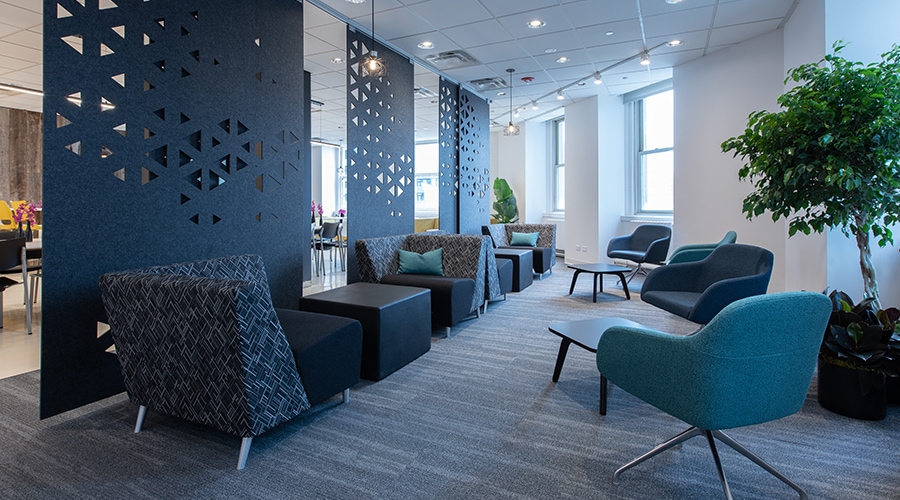Five Ways Workplace Design Can Support Mental Health

People are gradually returning to their offices as more and more of the economy reopens. After a few months working from home, they may be nervous about what that return to work will look like in the time of coronavirus.
Employers have an obligation to look out for the mental health of their teams. Not only is it the right thing to do -- a healthy employee is a more productive employee.
At KI, we embrace the philosophy of active design as a means of building a healthier workplace. Here are a few tips that can help employers promote the mental health of their employees.
1. Encourage movement
American culture has long been sedentary. The average person sits 13 hours a day. All that sitting has negative implications for physical and mental health.
Employers can get their employees up and at 'em by subtly encouraging movement throughout the workday. Sit/stand desks can nudge people to change their working posture regularly. In the era of social distancing, outdoor meetings and walking conference calls can ensure that people get out from behind their desks and log some steps.
Research shows that even five minutes of walking every hour translates to better mood and increased productivity.
2. Create multiple spaces to work
Spending all day in one spot -- whether at our desks or working from home at the kitchen table -- can be draining. A change of scenery may be just what's needed to stoke the creative fires or solve that thorny problem before us.
For example, regenerative spaces like lounges or meditation rooms can allow workers to take a break and organize their thoughts before they return to their desks for that important video sales pitch.
At KI, we've created private WiggleRoom pods that can offer individual workers a place for uninterrupted focus work. And since they accommodate just one person at a time, they're perfect for social-distancing.
3. Get some sun
Sunlight is good for us! It enhances our mood and promotes the production of Vitamin D. Too little can even lead to depression.
There are several easy ways to let the sunshine in. For example, Lightline Architectural Walls can delineate space while allowing natural light to make its way into interior offices. Employers can also encourage employees to take lunch outside by installing patio seating. Not only is dining alfresco good for the soul, it's also safer in this time of coronavirus.
4. Bring nature inside
As the weather cools, a walk in the woods surrounding the office, or even a quick jaunt around the block, may not be comfortable. But employers can bring nature into the workplace. For some, indoor plants suffice. Others may consider green walls with plants growing out of them.
These small investments can pay off. Studies show that merely looking at greenery can reduce feelings of stress and anxiety.
5. Keep employees safe
People returning to the office are understandably concerned about how they can protect themselves from the coronavirus. They may crave the person-to-person contact they've missed while working from home. But they don't want the cost of that contact to be getting sick.
Employers can use furniture to manage employee traffic and keep people appropriately distant from one another. Our Tattoo Flex Screens can double as whiteboards for impromptu meetings and barriers that create de facto hallways. Workers can raise our Universal Height-Adjustable Screens for privacy. Or they can lower them when they're ready to interact with their neighbors.
Looking Ahead
The pandemic has upended the way we work -- and is forcing employers to rethink the design of their workspaces. But the principles of active design are still instructive -- and can empower employers to create offices that boost the mental and physical health of their employees.
Subscribe
Stay up to date with the latest trends and more.










